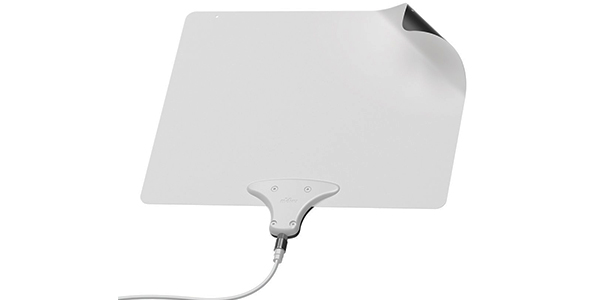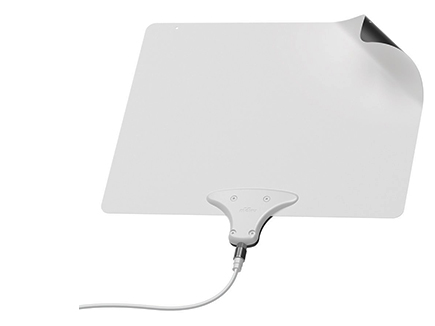Tom's Guide Verdict
The Mohu Leaf 50 offers a great blend of performance with a sleek design, and we like the option of shaving $30 off with the unamplified Leaf 30 version.
Pros
- +
Slim, unobtrusive design
- +
excellent reception
Cons
- -
Pricey
Why you can trust Tom's Guide
Who's It For?
This antenna is for viewers who value unobtrusive design.
NOTE: This product was tested at an earlier date in a different location — New Orleans. Mohu has changed the name of the product, but not its design or components.
Design and Setup: Easily blends in

The Mohu Leaf 50's ultra-thin, flexible design lends itself very nicely to blending in with your decor. (It's white on one side and black on the other, so you have options.) The lightweight Leaf is also extremely easy to mount to a wall with just a couple of tacks. It comes with a detachable coaxial cable and Mohu's Jolt-powered amplifier. (You can buy the Jolt separately; more on that below.) This antenna's low-profile design also makes it easy to hide behind your TV or other furniture, provided that such placement doesn't affect reception.
Performance: Plenty of channels
As the name implies, this $70 antenna is meant to pull in stations up to 50 miles away, assuming no obstacles. Alas, in urban test settings, we couldn't push the Leaf to its limits. In our New Orleans test location, we received 24 channels, which was solid performance for that area. The farthest station the antenna could receive was still only about 9 miles away, a limitation caused by obstacles. We had to experiment moderately with placement to max out the device's performance.
You can also buy just the antenna, as the Leaf 30, for $40. This model got four fewer stations than we received with the amp. But if your local broadcasters are relatively close, the Leaf 30 might do the trick. You could also start with the Leaf 30 and buy the Jolt later for $30 if you need the boost. There's no price penalty for buying the two parts separately.
Follow us @TomsGuide, on Facebook and on Google+.
Get instant access to breaking news, the hottest reviews, great deals and helpful tips.
Mike Kobrin is a freelance journalist who has written about audio technology for the likes of Popular Science, Popular Mechanics, Mens Journal, Rolling Stone, Consumers Digest, DigitalTrends, Wired News, CrunchGear, CNet and PC Magazine, as well as Tom's Guide. He's also a musician, with years of experience playing the trumpet.

